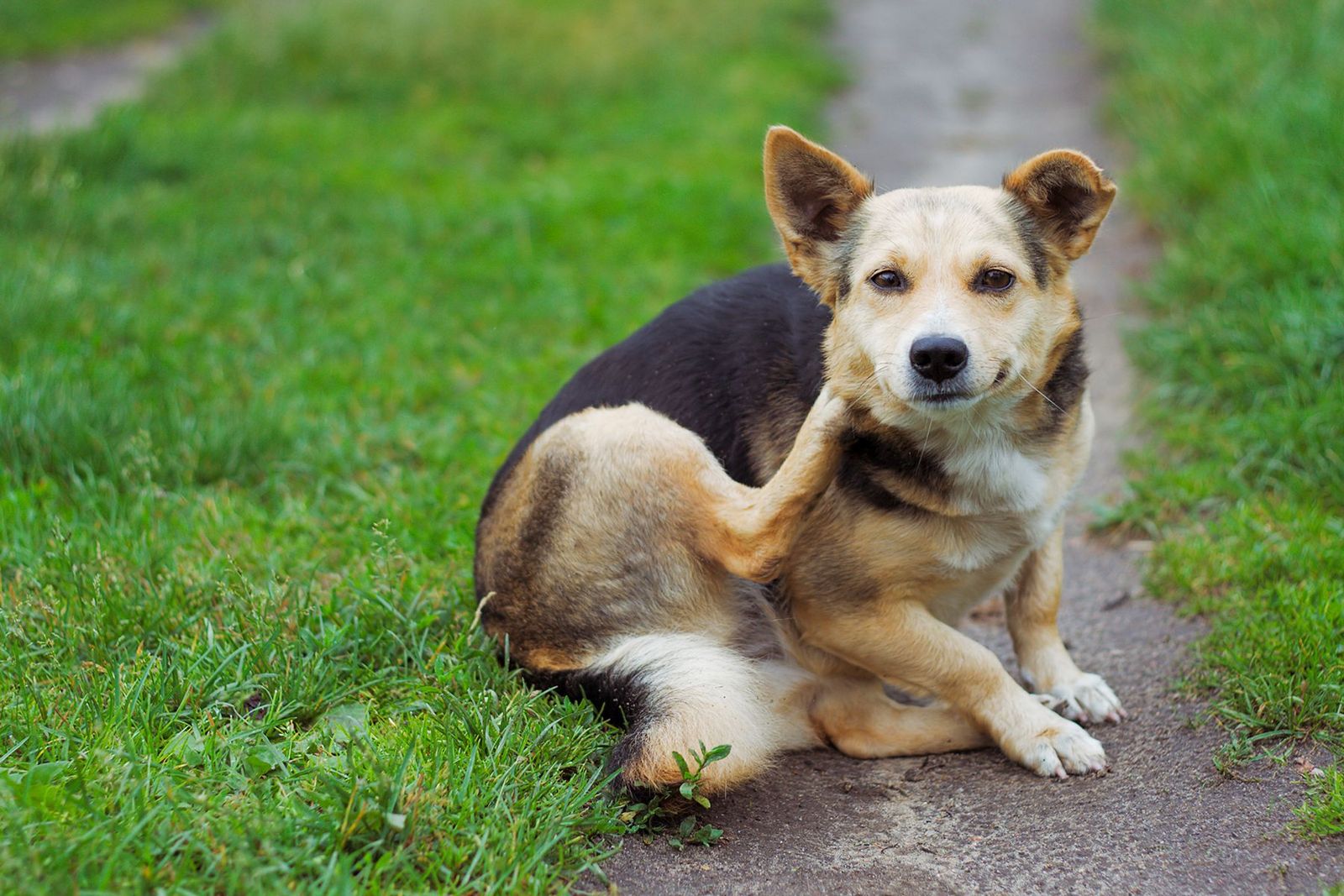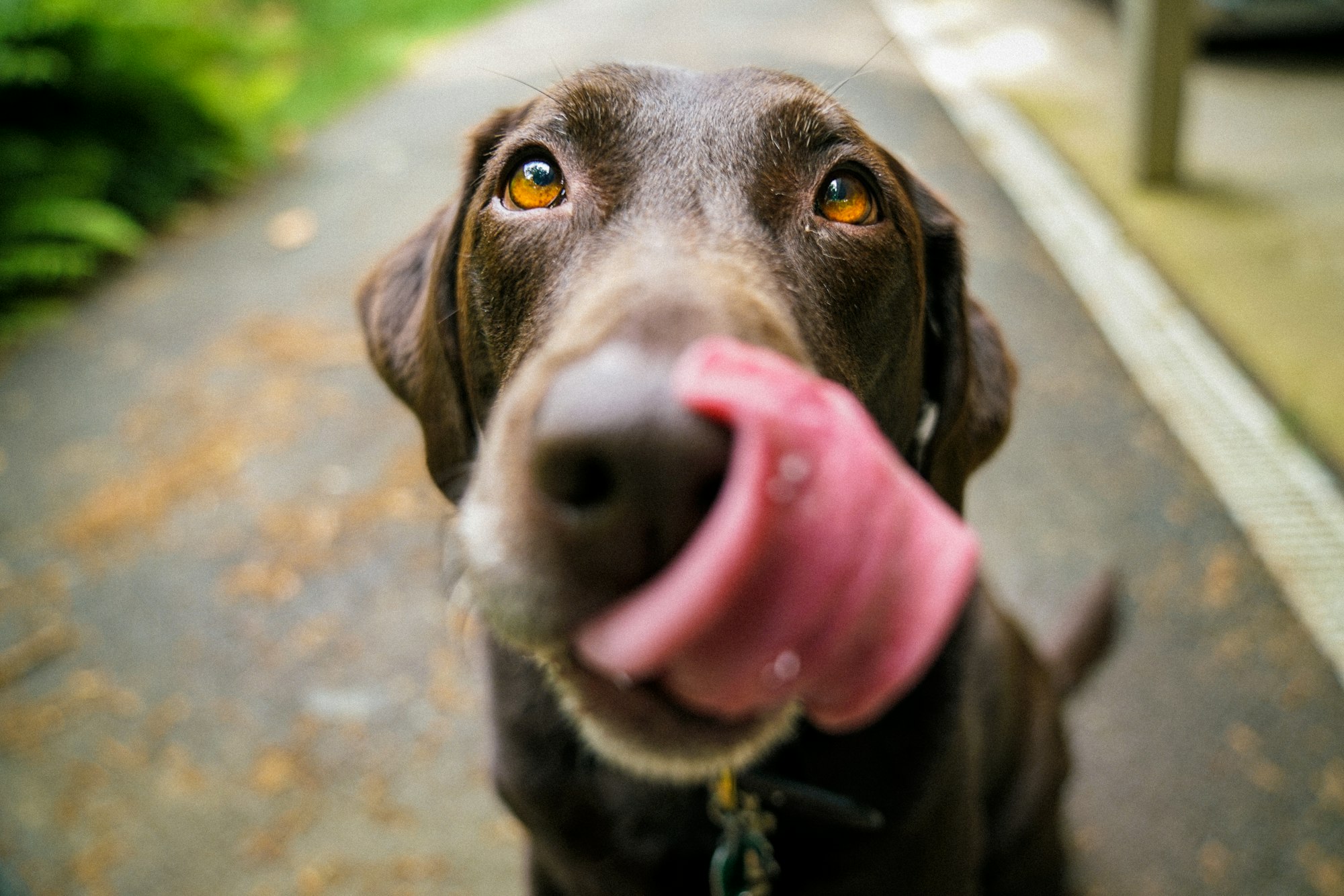Fleas are a common problem among dogs, and it's important for pet owners to know how to identify them early on. If left untreated, a flea infestation can lead to serious health problems for your furry friend. Therefore, it's important to know how to tell if your dog has fleas and what to do about it.

One of the first signs that your dog may have fleas is excessive scratching and biting. If your dog is constantly scratching or biting at their skin, it's likely that they are experiencing discomfort caused by fleas. Additionally, you may notice small red bumps or scabs on their skin, which can be a sign of flea bites.
Another way to check if your dog has fleas is to use a flea comb. This is a special comb that is designed to remove fleas and their eggs from your dog's fur. Simply run the comb through your dog's fur, paying close attention to their neck, tail, and underbelly. If you see any fleas or flea dirt (tiny black specks that look like pepper), your dog has fleas.

Recognizing Flea Infestation Signs
If you are a dog owner, it is important to recognize the signs of a flea infestation. Fleas are a common problem for dogs and can cause a variety of health issues if left untreated. Here are some signs that your dog may have fleas:
Excessive Scratching, Biting, or Licking
One of the most common signs of a flea infestation is excessive scratching, biting, or licking. If your dog is constantly scratching or biting at its skin, it may be a sign that it has fleas. Flea bites can be very itchy and uncomfortable for dogs, and they may try to relieve the itch by scratching or biting at the affected area.
Flea Dirt in the Fur
Flea dirt is another sign that your dog may have fleas. Flea dirt is actually flea feces, which looks like small black specks in your dog's fur. To check for flea dirt, use a flea comb and comb through your dog's fur. If you see black specks on the comb, it is likely that your dog has fleas.
Flea Bites on Your Dog's Skin
Flea bites can be difficult to see, but they are another sign of a flea infestation. Flea bites often appear as small red bumps on your dog's skin. They are most commonly found on the back, neck, and belly. If you notice these small red bumps on your dog's skin, it may be a sign that it has fleas.
Visible Fleas on Your Dog
If you can see fleas on your dog, it is a clear sign that it has a flea infestation. Fleas are small, dark brown insects that move quickly through your dog's fur. They are most commonly found on the back, neck, and belly. If you see fleas on your dog, it is important to take action right away to get rid of them.

Overall, it is important to regularly check your dog for fleas and take action if you notice any signs of a flea infestation. By recognizing the signs early, you can help prevent the problem from getting worse and keep your dog healthy and happy.
Checking for Fleas on Your Dog
If you suspect that your dog has fleas, it's important to check for them as soon as possible. Here are three methods you can use to check for fleas on your dog:
Performing a Visual Inspection
One of the easiest ways to check for fleas on your dog is to perform a visual inspection. Start by parting your dog's fur and looking for small, dark insects crawling around. Fleas are about the size of a grain of rice and are dark brown or black in color. They move quickly and can be hard to spot, so be sure to check carefully.
Using a Flea Comb
Another way to check for fleas on your dog is to use a flea comb. Flea combs have fine teeth that can catch fleas and flea dirt. To use a flea comb, run it through your dog's fur, paying close attention to areas where fleas are known to hide, such as the neck, tail, and behind the ears. After each stroke, dip the comb in a bowl of soapy water to kill any fleas or flea dirt that you have collected.

White Towel Test
The white towel test is a simple way to check for flea dirt on your dog. Start by placing a white towel on the ground and rubbing your dog's fur vigorously. If your dog has fleas, you should see small black specks falling onto the towel. These specks are flea dirt, which is actually flea feces. To confirm that the specks are flea dirt, place a drop of water on them. If the specks turn red, it's a sign that they are flea dirt because flea dirt contains digested blood.
By using these methods, you can check for fleas on your dog and take action to get rid of them if necessary. Remember that prevention is key when it comes to fleas, so be sure to keep your dog's environment clean and use flea prevention products as recommended by your vet.
Understanding the Flea Life Cycle
Fleas are small, wingless insects that feed on the blood of mammals and birds. They are a common problem for pet owners, and it is important to understand their life cycle to effectively control and prevent infestations.
Eggs and Larvae
The flea life cycle consists of four stages: egg, larva, pupa, and adult. Flea eggs are laid on the host animal and then fall off onto the ground. They hatch within 2-14 days, depending on the temperature and humidity levels. Flea larvae feed on organic debris found in carpets, bedding, and other areas where pets spend time. They can also feed on adult flea feces, which contain undigested blood.
Pupae and Adult Fleas
After about 5-14 days, the larvae spin a cocoon and become pupae. The pupal stage can last anywhere from a few days to several months, depending on the environmental conditions. When the adult flea emerges from the cocoon, it looks for a host animal to feed on and reproduce. Adult fleas can live for several months and can lay up to 50 eggs per day.
To effectively control and prevent flea infestations, it is important to target all stages of the flea life cycle. This can be done through a combination of treatments, including flea preventatives for pets, vacuuming carpets and furniture, and washing bedding and other items that may be infested with fleas or flea eggs. It is also important to treat outdoor areas where pets spend time, as fleas can survive in the environment for several months.
Preventive Measures and Treatments
Topical Flea Treatments
One of the most common ways to prevent fleas on dogs is by using topical flea treatments. These treatments can be applied directly to the skin of the dog and can last for several weeks. They work by killing fleas on contact and preventing new fleas from developing. Some of the most popular brands of topical flea treatments include Frontline, Advantage, and K9 Advantix.
Oral Flea Preventatives
Oral flea preventatives are another effective way to prevent fleas on dogs. These medications are given to the dog orally and work by preventing fleas from developing. Some of the most popular brands of oral flea preventatives include NexGard, Bravecto, and Sentinel.
Environmental Control
Environmental control is also an important part of preventing fleas on dogs. This involves keeping the dog's environment clean and free of fleas. This can be done by regularly vacuuming carpets and furniture, washing the dog's bedding in hot water, and using flea sprays or powders in the home. It's also important to keep the dog's outdoor environment clean by regularly mowing the lawn and removing any debris or standing water.

Overall, preventing fleas on dogs requires a combination of preventive measures and treatments. By using topical flea treatments, oral flea preventatives, and environmental control, dog owners can help keep their pets free of fleas and prevent infestations from occurring.
When to See a Veterinarian
If a dog owner suspects that their dog has fleas, they should take action right away to prevent the problem from getting worse. However, in some cases, a veterinarian's intervention may be necessary. In this section, we will discuss situations in which a dog owner should consider taking their pet to a veterinarian.
Persistent Infestations
If a dog owner has tried various flea treatments and preventive measures, but their dog continues to have fleas, it may be time to see a veterinarian. A veterinarian can help determine the underlying cause of the persistent infestation and recommend appropriate treatment.
Allergic Reactions to Flea Bites
Some dogs may develop an allergic reaction to flea bites, which can cause severe itching and discomfort. If a dog is excessively scratching or biting at their skin, or if they have red, irritated skin, it may be a sign of an allergic reaction to flea bites. In such cases, a veterinarian may recommend medication to alleviate the itching and prevent further complications.
Flea Prevention Advice
A veterinarian can also provide advice on flea prevention measures that are specific to a dog's individual needs. They can recommend appropriate flea preventatives and provide guidance on how to properly administer them. Additionally, they can offer advice on how to reduce the risk of flea infestations in the home and yard.
Overall, if a dog owner suspects that their dog has fleas or is experiencing any symptoms related to flea infestations, it is important to seek veterinary care. A veterinarian can help diagnose the problem and provide appropriate treatment and preventive measures to keep the dog healthy and comfortable.
Conclusion:
In conclusion, managing flea infestations in dogs is essential for maintaining their health and comfort. Recognizing early signs like excessive scratching and using tools like flea combs can help detect fleas promptly. Employing preventive measures such as topical treatments, oral preventatives, and maintaining a clean environment are key to controlling flea populations.
If fleas persist despite these efforts, or if your dog shows signs of allergic reactions, consulting a veterinarian is crucial. By understanding the flea lifecycle and integrating comprehensive prevention and treatment strategies, dog owners can effectively safeguard their pets against the discomfort and health risks associated with flea infestations.






